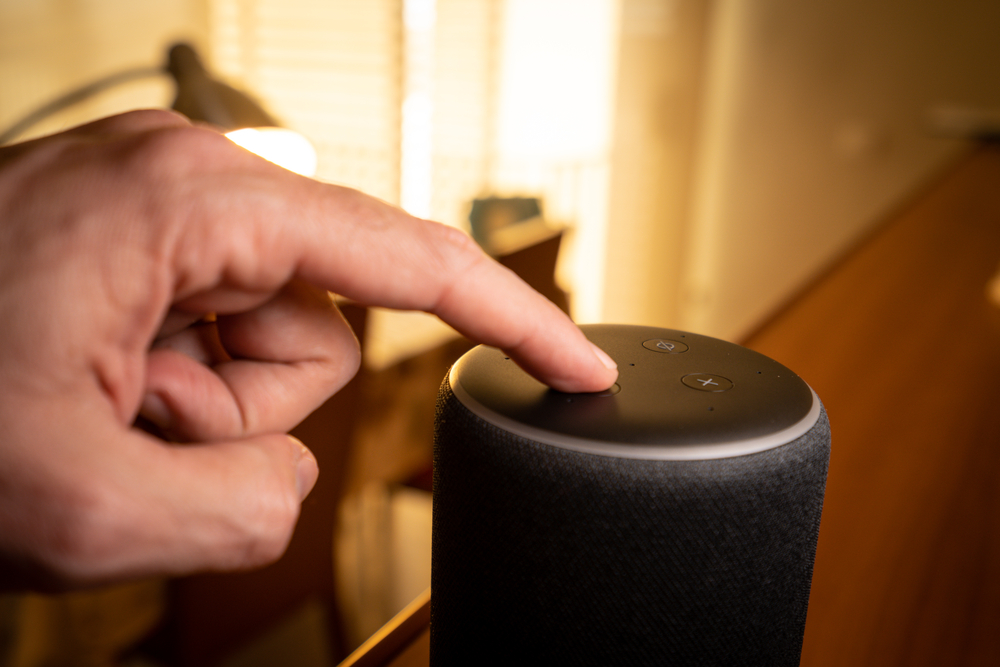Want Your IVR to Perform Like Alexa or Google Assistant? Here’s How You Do It.

Consumer expectations are being set by voice assistants like Siri, Google Assistant, and Alexa. We interact with this technology every day. So do business leaders. We often hear clients complain that their own voice channels pale in comparison to the voice assistants offered by tech giants. Frequently, they assume the solution is investing in new technology.
If you want your IVR (interactive voice response) system to function at a higher level, or if you’re thinking about how VA (voice assistants) might play into your customer experience, throwing money at new technology isn’t necessarily the answer.
The platform is the foundation. It’s what you do with it that counts. Putting the right Bot Management System in place will get the most out of whatever platform you choose.
Why Just Switching Up Your Platform Won’t Solve Your IVR or Chatbot Problem
Business leaders often think “better” technology platforms will create better experiences for their customers. We know this is a myth, though. How?
Because the same platforms Alexa and Google use — Lex and Dialogflow, respectively — are available for you to build your own IVR and chatbots with. But moving to the same platforms as big tech companies doesn’t mean the problems with your IVR and chatbots will disappear. A recent study of Alexa Skills, for example, found that of the 30,000 skills analyzed, only around 37% have any reviews, and of those, only 19% had positive reviews. Poor reviews are not in short supply.
If Amazon’s Alexa Skills can vary so greatly in quality, it’s obviously not the platform itself that makes for a great experience. For all of its usefulness, Google Assistant has a lot of room for improvement when it comes to user experience, too.
We’re not saying these platforms are no good. Alexa and Google Assistant both sound great and can be used effectively. That’s not all thanks to the platform, though. It’s thanks to the fact that Amazon and Google have put in the time and effort to build great things on top of those platforms.
Google and Amazon haven’t just sunk countless hours into building these platforms, with “as many as 10,000 of Amazon’s employees” working on Alexa Smart Assistant and Echo products. They’ve invested in building the experience you love on top of them. So you can’t just “use the platform” in the hopes of duplicating their customer experience or success without also mirroring the investments they make in conversation design, speech science, programming, and analytics that deliver a great customer experience.
What you can do is what we teach — use a bot management system to get the most out of the platform you have, and only switch platforms if and when your bot strategy demands it.
What Happens When You Rely on the Platform to Do the Work?
Take some time to scroll through a few pages of Alexa Skills, and you’ll see. Those one and two-star ratings aren’t the results of a bad platform — no more than those four and five-star ratings are. You can create great experiences in IVR or voice assistants, but you’ve got to go about it the right way. Google and Amazon have been running their own bot management systems for years to create the experience that you love on top of Alexa and Google Assistant.
The developers and designers of those poorly-rated apps probably have not.
Some app developers see a great conversational AI platform and just assume that whatever they build for it will be on par with Alexa or Google Assistant because they’re using the same foundation. That’s where the rubbish skills with consistently low user ratings come from.
These developers haven’t been paying attention to the industry for the last 20 years to see previous failures up close the way we have. It’s no coincidence that early iterations of IVR annoyed users so much. Technical limitations play a role — and frankly, voice assistant technology isn’t really where it needs to be to excel in the broad range of customer service tasks that agents handle every day — but the lack of user-centered design is just as much to blame for IVR’s early failings. It’s improved over the years, but rushing out of the gate certainly didn’t do it any favors.
Great Conversational AI Requires a Thorough Discovery Process
Let’s stop to think about what Alexa does for users. The system gives users general reminders, right? It answers general knowledge questions, and it tells you when your deliveries are due to arrive. These features aren’t something Amazon randomly decided to do with Alexa. It’s what their discovery process revealed about what their users wanted while they were hanging out in the kitchen with Alexa listening on the countertop.
Amazon came up with the bot strategy, and then they brought on a team of designers to handle the next stage of the bot management system. They’re designing great experiences, developing them, and implementing them on the platform. Then, they’re constantly looking at data to figure out where the next opportunities lie.
Using this data and doing this discovery work allows Amazon to show up for their users in the way that those users want. That’s what creates a great user experience. What is it that your users are asking for? What are multiple users looking for that your bots currently can’t deliver? Is the technology capable of automating these tasks effectively? Is the required investment justified by the expected business benefits? Answering these questions will help you discover where to focus your efforts next.
Start with the Strategy, Manage Your Bots, and Prepare for the Future
Our research shows that 51% of consumers would be likely or very likely to use their voice assistants for sales and customer service purposes if the organization they were engaged with provided that option. With conversational AI playing a bigger role in our daily lives than ever before, that’s an opportunity that shouldn’t be missed.
There’s a lot of work you can do now to lay your foundation. That way, you’ll be ready to apply your process to new channels, including VA, when the time is right.
It doesn’t matter if you’re talking about IVR, VA, or chatbots. They’re all channels that allow humans to interact with systems using conversation. And because we learn language and conversation at such a young age, we can’t unlearn it. So IVR, VA, and chatbots need to leverage the norms of human-human conversation. They need to create a comfortable, easy-to-use experience.
Start by putting the right bot management system in place, and apply this to existing platforms and channels. Because the system itself is platform-agnostic, the same system can be used to roll out capability across new platforms and other channels — once your bot strategy or conversation design demands it.
That’s how you’ll offer an experience that can go toe-to-toe with the industry leaders of today.
Watch our on-demand webinar “Making Sense of Conversational AI.” Gain a new perspective on conversational AI, how it fits into your customer service strategy, and how you can get the most out of it.
Subscribe to our weekly AI Insights





